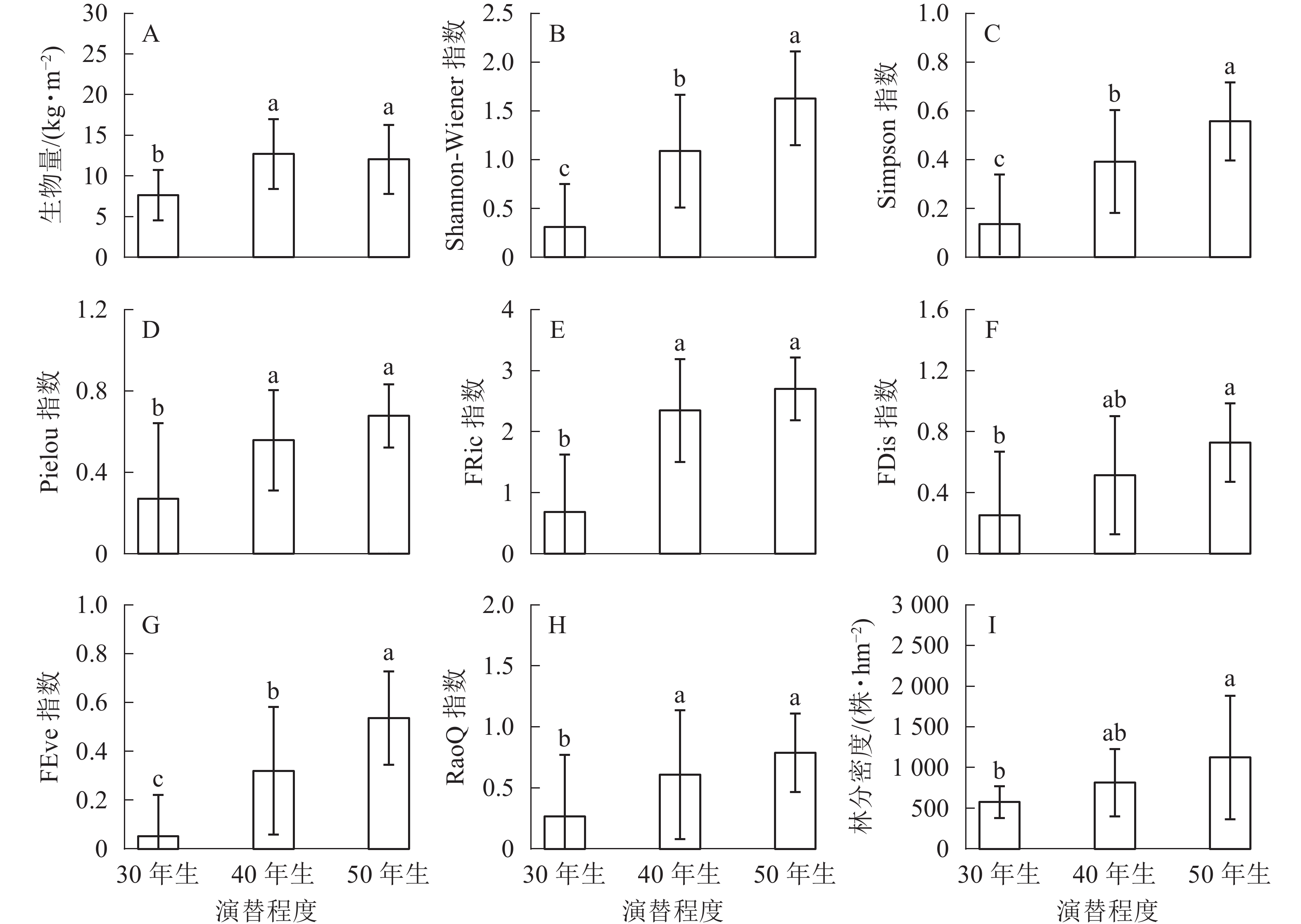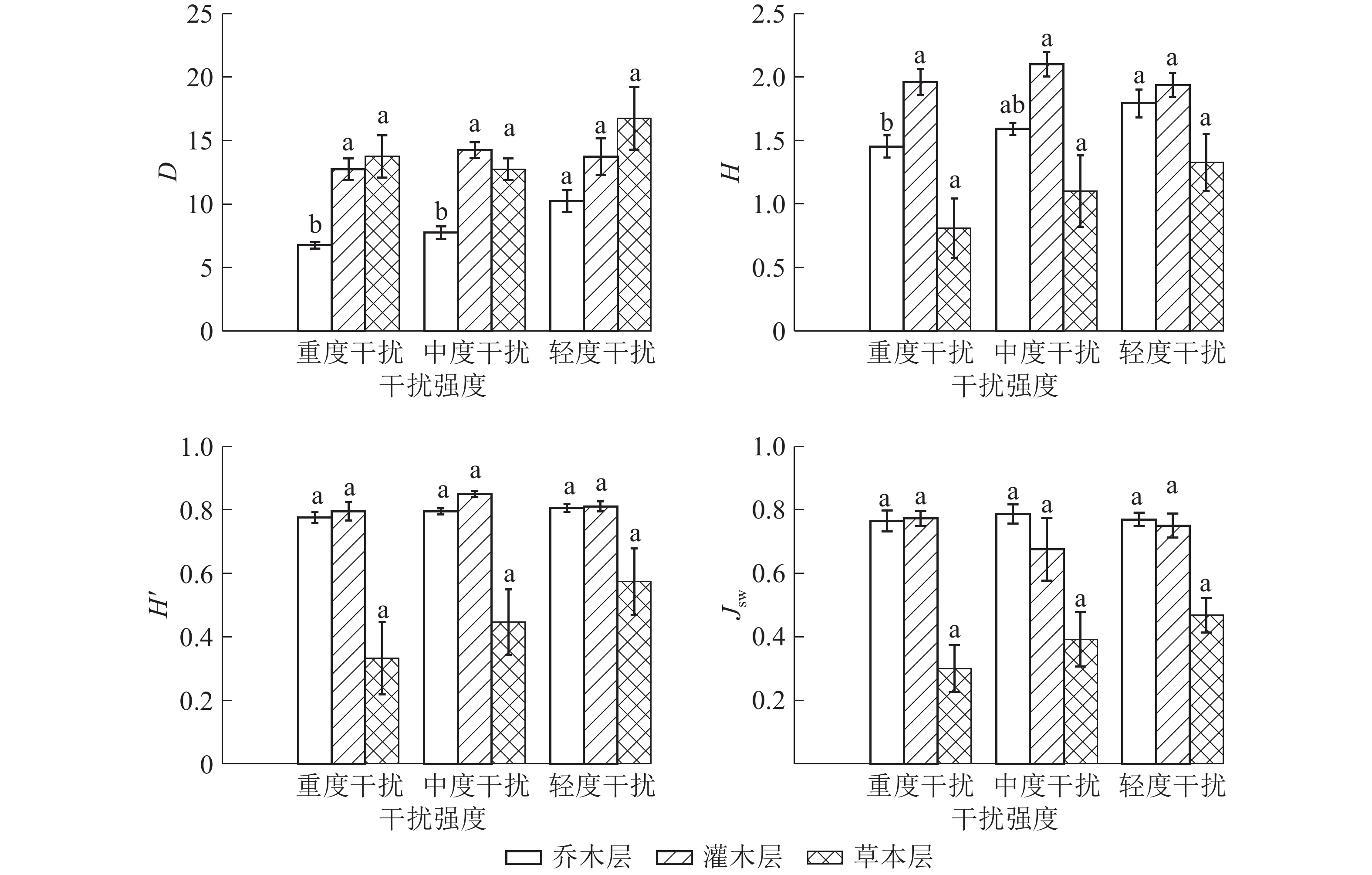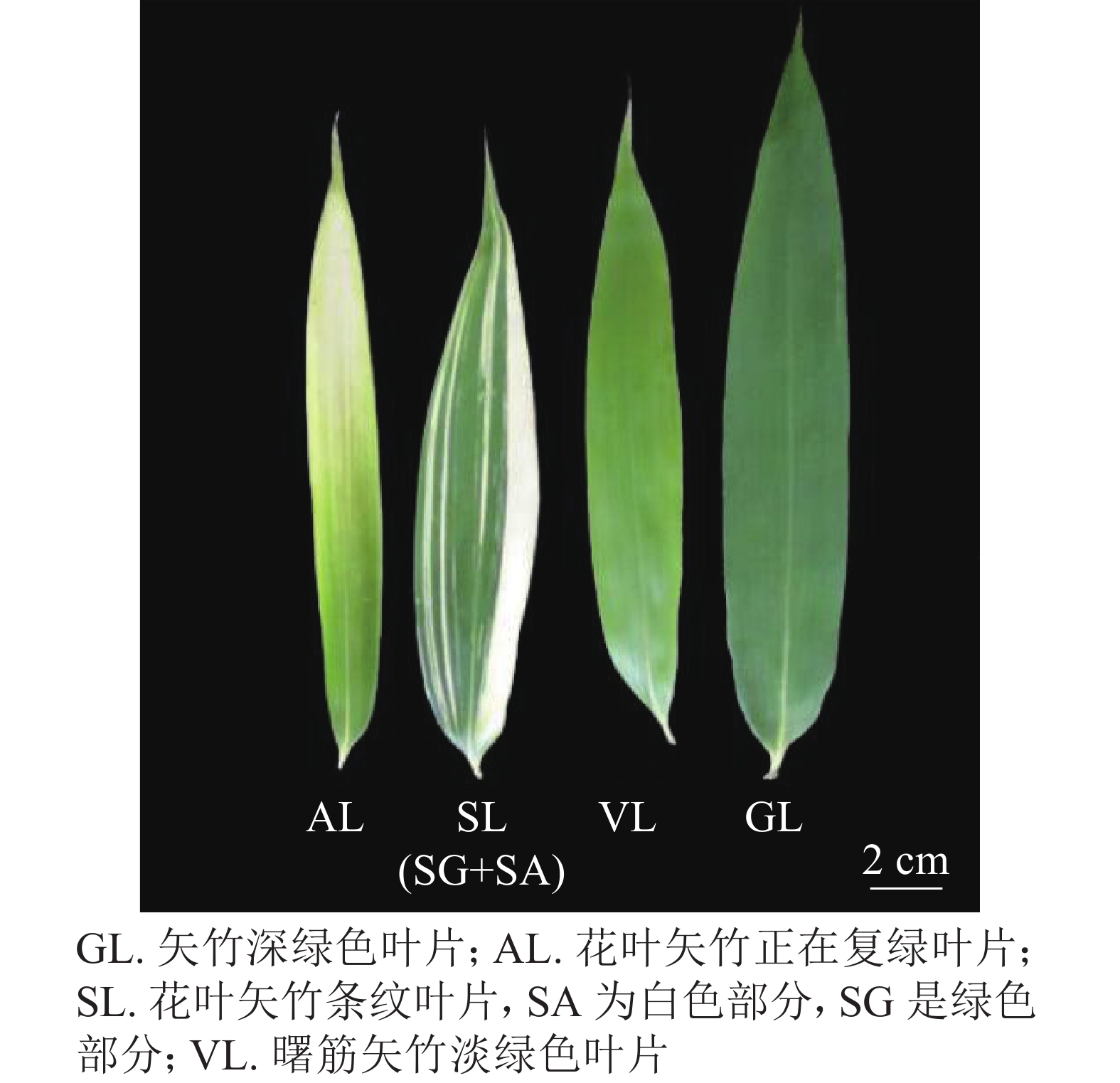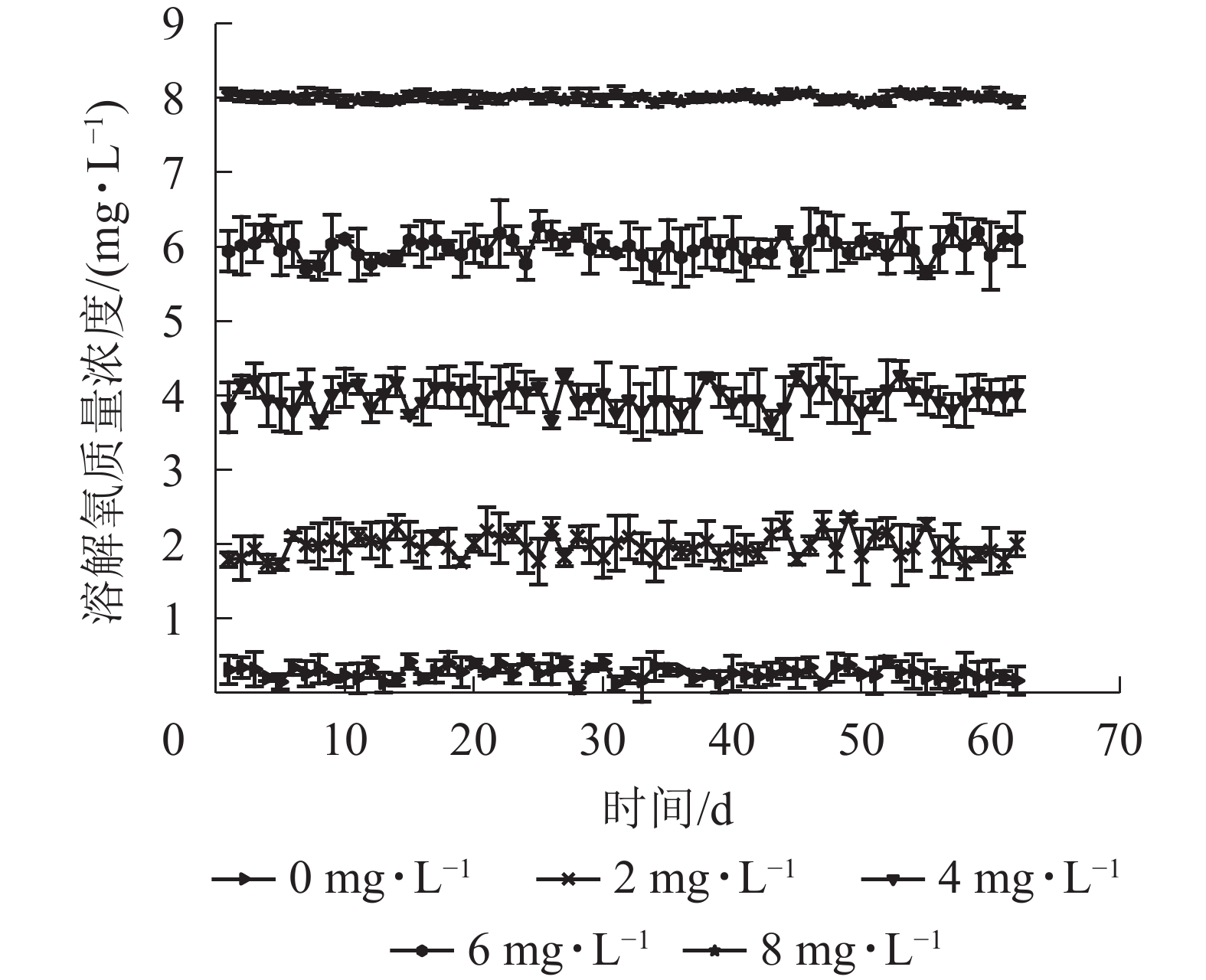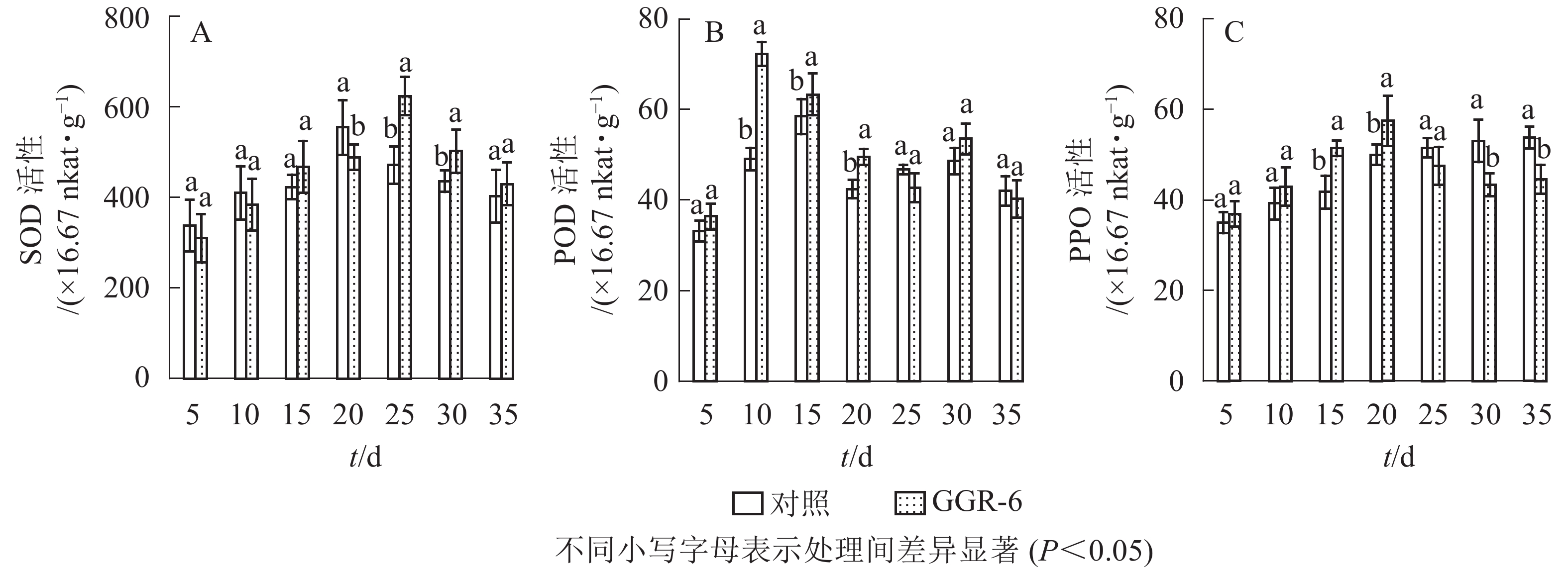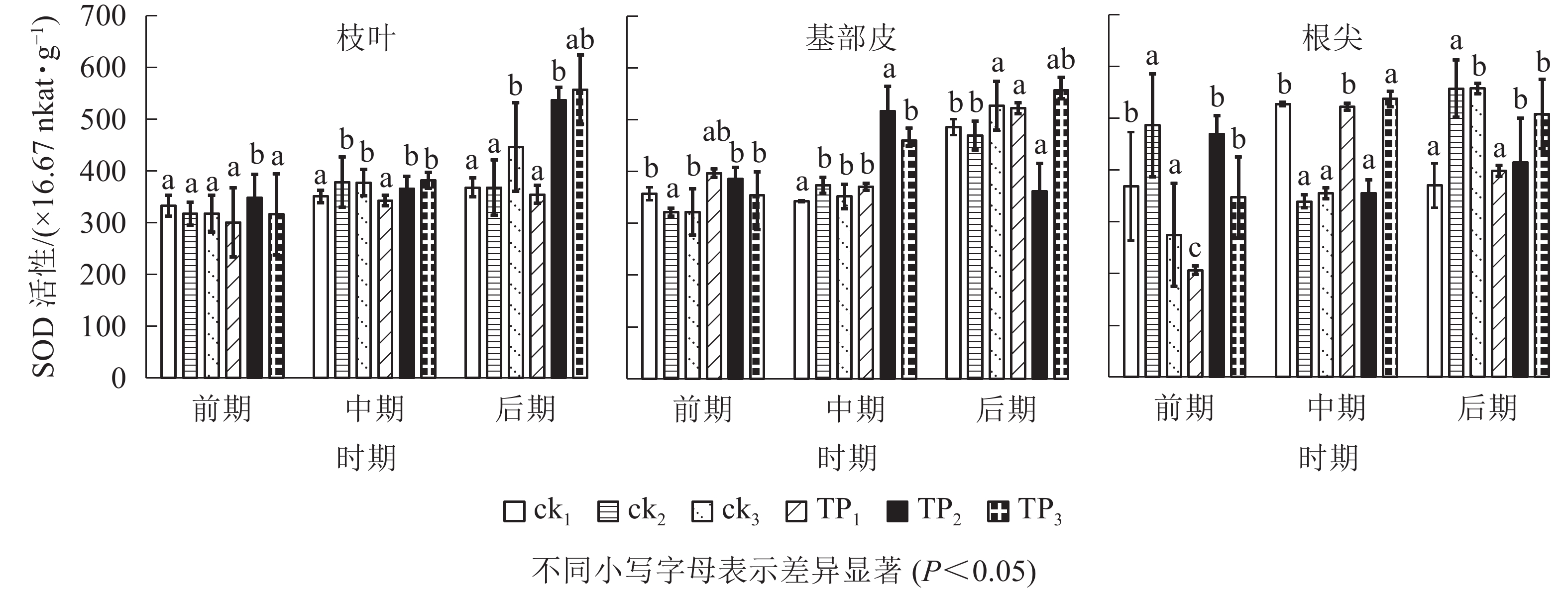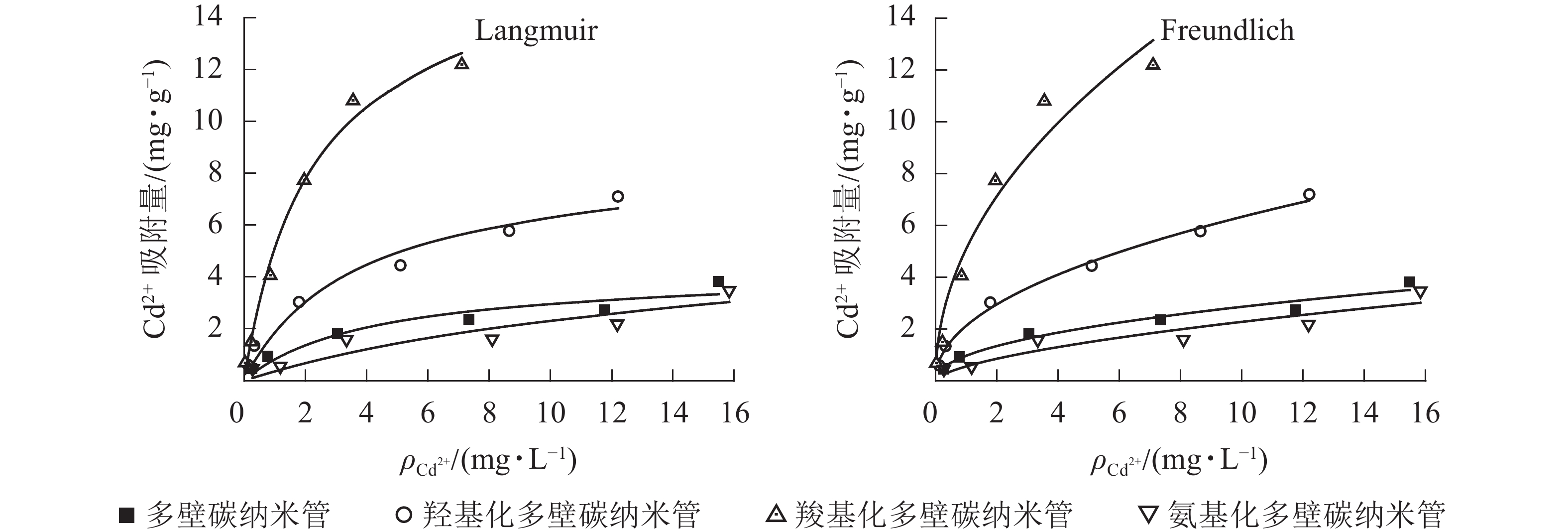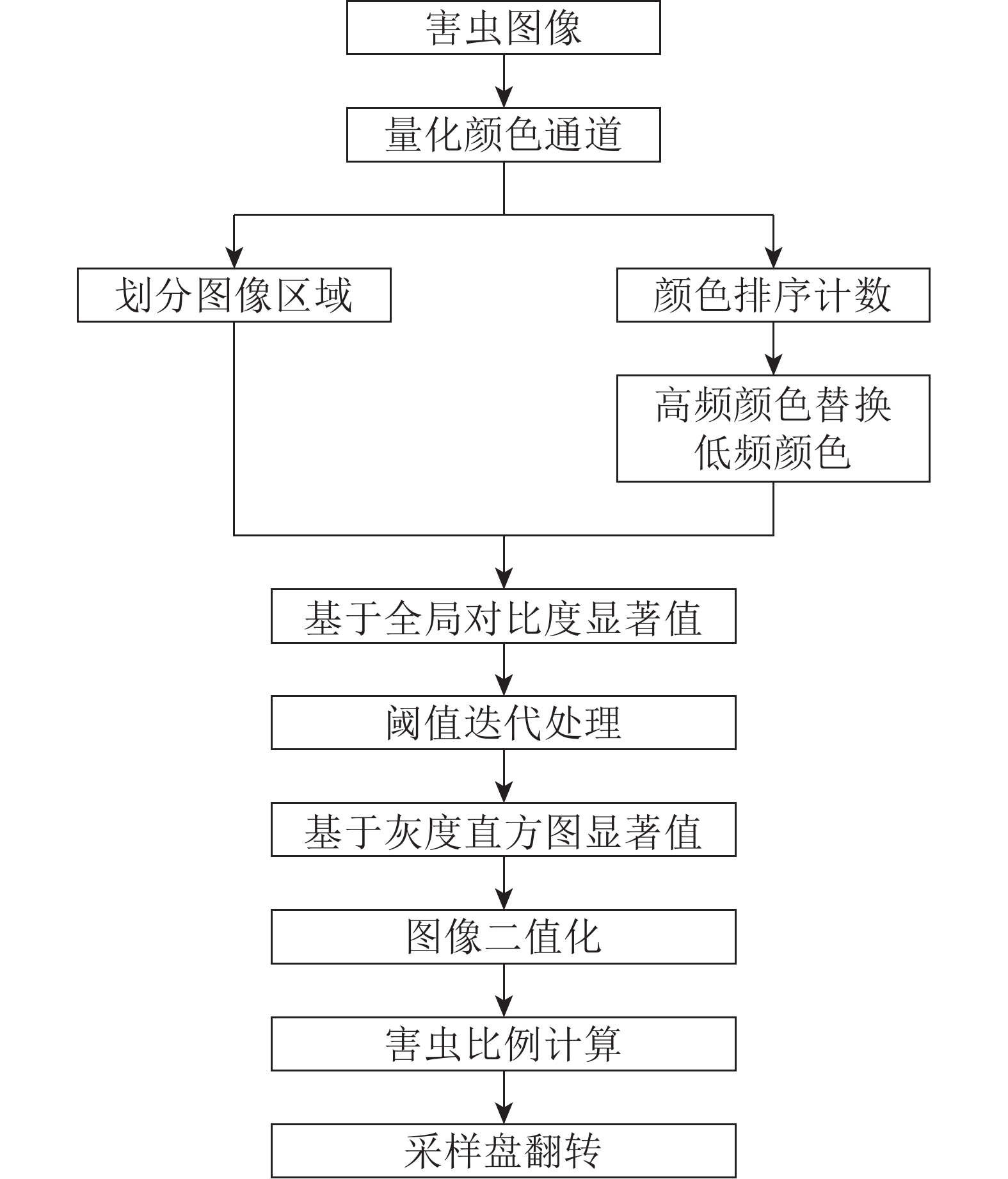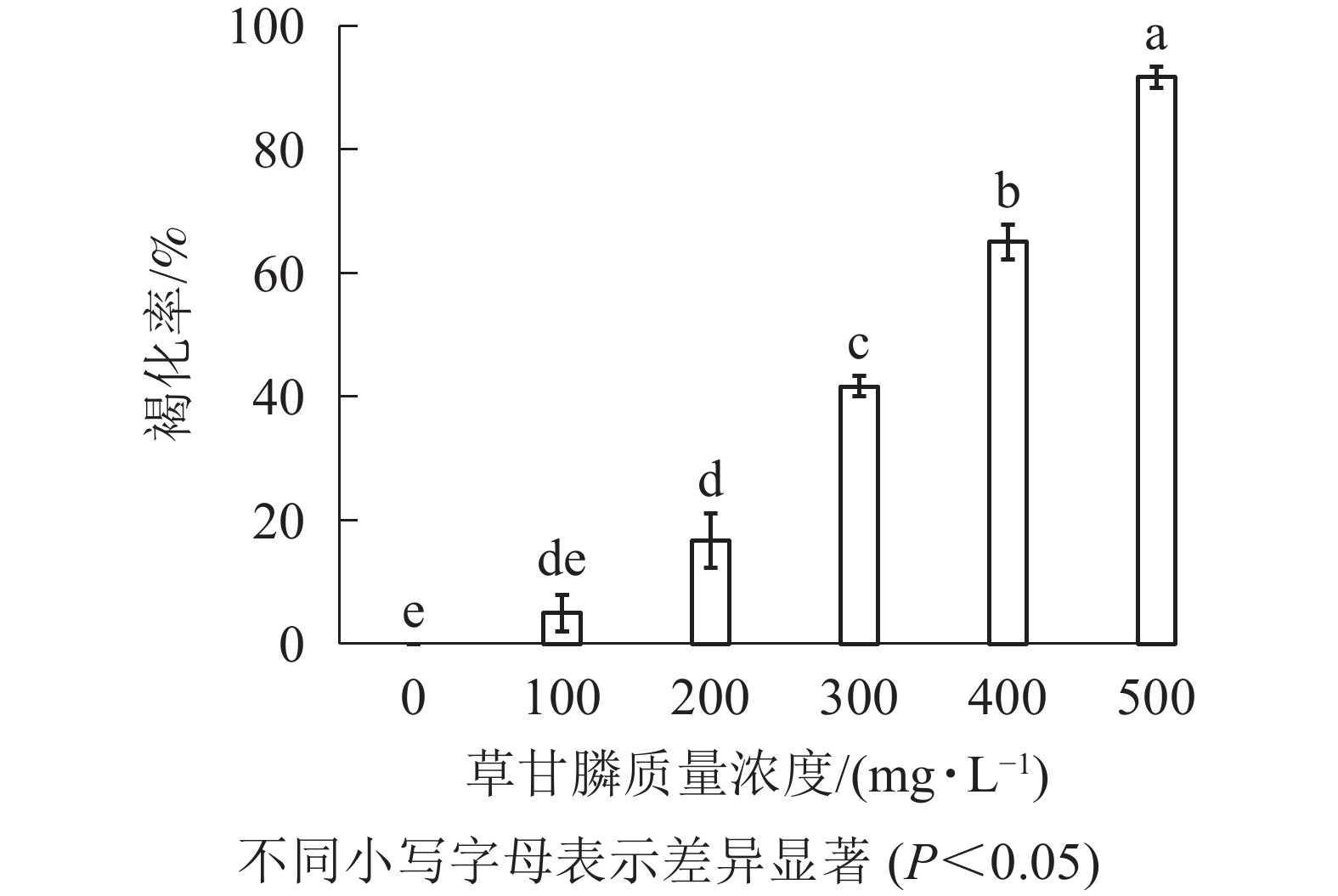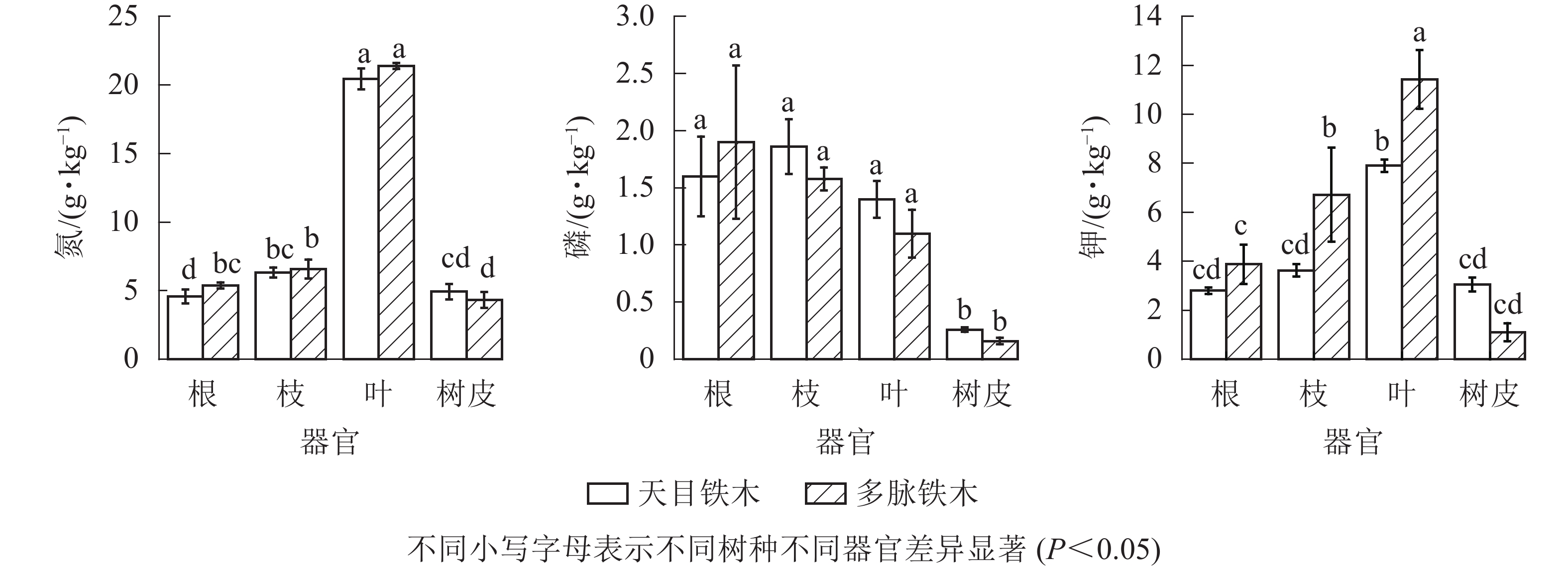2021 Vol. 38, No. 2
2021, 38(2): 225-234.
doi: 10.11833/j.issn.2095-0756.20200370
Abstract:
Objective This study aims to analyze the sequence characteristics and expression changes of hexokinase family members of Osmanthus fragrans. Method Based on the transcriptome data of O. fragrans cultivars ‘Yanhong Gui’, ‘Yulinglong’ and ‘Jinqiu Gui’, HXK homologous genes were selected for sequence analysis and phylogenetic tree analysis, and real-time fluorescence quantitative PCR was used to detect the expression of OfHXKs genes in different tissues and development stages of O. fragrans. Result Four HXK homologous genes OfHXK1−OfHXK4 were screened, and sequence identity of OfHXK1, OfHXK3 and OfHXK4 from different cultivars is more than 99%. OfHXKs encode 461−510 amino acid residues, including two conserved phosphorylation motifs phosphate 1 and phosphate 2, and one sugar binding motif. Sequence analysis and phylogenetic tree analysis showed that OfHXK1 and OfHXK2 have N-terminal membrane anchoring structures, which are grouped together with AtHXK1 and AtHXK2 from Arabidopsis thaliana. OfHXK3 without transmembrane region is closely related to AtHXK3, so it was speculated that OfHXK3 has catalytic effect but without sugar signaling function. OfHXK4 protein with 11 amino acid insertions at the adenosine binding domain, is closely related to AtHKL1 and AtHKL2. Four HXK gene members from O. fragrans are all expressed in the annual stem, biennial stem, tender leaves, mature leaves and inflorescence. With the development of flower, the expression levels of OfHXK1, OfHXK3 and OfHXK4 genes increase first and then decrease, while the expression patterns of OfHXK2 genes during flower development are different in the three cultivars. Conclusion According to sequence analysis and evolutionary tree analysis, it is speculated that OfHXK1−OfHXK4 all have the function of catalysing hexose phosphorylation, and OfHXK1 and OfHXK2 have the function of sugar sensing and signaling. The expression patterns of OfHXK1, OfHXK3, and OfHXK4 genes during the inflorescence development of the three varieties showed a regular increase and decrease with the process of flower opening, which may be associated with their functions in sugar metabolism. [Ch, 6 fig. 4 tab. 30 ref.]
2021, 38(2): 235-245.
doi: 10.11833/j.issn.2095-0756.20200255
Abstract:
Objective Wudalianchi Volcanoes, with its intact inland monogenetic volcanic landform and a complete vegetation succession process, is an ideal place to research matters like vegetation succession and the development of biodiversity system development. With a survey conducted of the species diversity and stability of forest community as well as the relationship between species diversity and stability, this study is an attempt to provide scientific basis for the succession, restoration and sustainable development of forest vegetation in Wudalianchi Volcanoes. Method Targeting at four old volcanic forest communities, the study has mainly investigated the quantitative characteristics of community structure, the species diversity of the tree, shrub and herb layer, the age structure of community and the age structure of Tilia amurensis and Quercus mongolica populations. Result (1) The number of species in the tree and shrub layer of each mountain forest community was bigger on the north slope than that on the south slope: with only one species with an important value≥1 found on the south slope, the composition species of the whole community showed little complexity. (2) On the north slope, the Margalef index and the Shannon-Wiener index of the tree and herb layer are larger than those of the shrub layer while the Simpson index and the Pielou index of the tree and shrub layer are larger than those of the herb layer yet on the south slope, all species diversity indexes of the herb and tree layer are larger than those of the shrub layer. (3) The age structure of forest community was stable on both north and south slopes, so was the age structure of T. amurensis and Q. mongolica populations, which indicated the stability of the communities. (4) On the north slope, the species diversity of the tree and shrub layer are bigger than that of the south slope, while that of the herb layer is smaller than that of the south slope. Moreover, the species diversity of the communities on the north and south slopes show either extremely significant or significant differences, with a large coefficient of variation. Conclusion The community structure of the old volcanic forest in the Wudalianchi Volcanoes was simple and the north slope enjoyed a bigger species diversity and higher community stability when compared with the south slope. [Ch, 6 fig. 4 tab. 31 ref.]
Effects of biodiversity on biomass of Pinus massoniana plantation under different succession degrees
2021, 38(2): 246-252.
doi: 10.11833/j.issn.2095-0756.20200334
Abstract:
Objective The purpose of this study is to explore the change law of biomass and biodiversity of Pinus massoniana plantations under natural succession degree and the relationship between them, so as to solve the problems of fertility decline, biodiversity reduction, and biomass decline of P. massoniana forest under the long-term pure forest management mode. Method Taking 3 P. massoniana plantations with different degrees of natural succession in Taizi Mountain, Jingshan County, Jingmen City of Hubei Province as the research object, the typical plot method was used to explore the relationship between biomass, biodiversity and stand density. Result (1) The biomass of 40-year-old and 50-year-old stands was significantly different from that of 30-year-old stand (P<0.05), and the average biomass of 40-year-old stand was the highest. (2) The diversity index increased with the succession, but it was different in different succession stages. Among them, Shannon-Wiener index and Simpson index had significant differences among different succession stages(P<0.05). There was no significant difference in Pielou index between 40-year-old and 50-year-old stands (P>0.05), but both were different from 30-year-old stands. The changes of functional richness and diversity were consistent with Pielou index. There was no significant difference in functional dispersion between 40-year-old stands and stands of other succession stages (P>0.05), but significant difference between 30-year-old stands and 50-year-old stands (P<0.05). There was significant difference in functional evenness among different succession stages (P<0.05). (3) There was no significant difference in stand density between 40-year-old stand and the stands of other succession stages (P>0.05), but significant difference between 30-year-old stand and 50-year-old stand (P<0.05), and the change trend increased with the succession degree. (4) In the best explanation model, the explanatory variables included functional dispersion, Shannon-Wiener index, Simpson index and Pielou index, among which functional dispersion was more effective than other species diversity indexes in explaining biomass changes. Conclusion Biodiversity factors can explain the changes of biomass to some degree, and the functional dispersion of functional parameters has the greatest impact on biomass. [Ch, 1 fig. 4 tab. 34 ref.]
2021, 38(2): 253-261.
doi: 10.11833/j.issn.20950756.20200312
Abstract:
Objective This study aims to reveal the effects of human interference on species diversity and biomass in E. grandis plantations. Method 12 sample plots of E. grandis plantations (20 m×20 m) with different interference intensities were set up by typical plot method in Cangping Mountain Park in Ya’an City of Sichuan Province, to investigate the species composition, species diversity(richness index D, Shannon-Wiener index H, Simpson dominance index H', Pielou evenness index Jsw), and plant layer biomass. Result There were 87 species of vascular plants belonging to 55 families and 82 genera. The number of species in E. grandis plantation decreased with increasing interference. The D, H and H' indices of tree layer and herb layer decreased with the increase of interference intensity. The D, H and H' indices of shrub layer reached the maximum under moderate disturbance. The difference of D and H indices in tree layer was significant (P<0.05). With the increase of disturbance intensity, the biomass of each plant layer showed different changing trends. The tree layer had the highest volume (12.01 m3·hm−2) under moderate disturbance, while the biomass of shrub layer (394.533 kg·m−2) and herb layer (359.680 g·m−2) was the highest under light disturbance. The D index of tree layer and H' index of herb layer were significantly positively correlated with aboveground biomass and total biomass of herb layer (P<0.05). The Jsw index of herb layer was significantly positively correlated with total biomass of herb layer (P<0.05). Conclusion Moderate disturbance will increase species diversity and biomass in E. grandis plantation. The relationship between species diversity and biomass is subject to human interference and natural conditions, and there is no fixed relationship. [Ch, 2 fig. 3 tab. 25 ref.]
2021, 38(2): 262-270.
doi: 10.11833/j.issn.2095-0756.20200349
Abstract:
Objective This study aims to explore the species composition, population structure and interspecific association of wild Sinocalycanthus chinensis community, and to supplement the distribution of wild S. chinensis resources in Tiantai County, Zhejiang Province. Method On the basis of field survey and previous research data, five 20 m × 20 m sample plots of S. chinensis were established for community investigation. Result (1) The community types of S. chinensis were diverse, mainly including deciduous broad-leaved forest, coniferous forest and bamboo forest, with obvious stratification. The dominant species of tree layer were Platycarya strobilacea, Lindera glauca, Botrocarpyum contoversum, Cunninghamia lanceolata, and Phyllostachys edulis. The dominant species of shrub layer were Hydrangea chinensis, S. chinensis, and Boehmeria tricuspis. The dominant species of herb layer were Parathylyperis glandulgera, Viola rossii, and Pilea pumila. (2)The population structure of S. chinensis was “Pyramid” type, with the highest proportion of individuals in gradeⅠ, accounting for 56.51%, indicating that the population was in the growth stage. (3) The analysis of interspecific association and correlation of species pairs in tree layer and shrub layer showed that the positive and negative correlation ratios were both greater than 1, and there was no correlation between S. chinensis and most tree species. Conclusion The species of S. chinensis community are closely related, and the structure and function of the community tend to be perfect, but S. chinensis may be relatively independent in the community. In view of its negative correlation and competitive relationship with Lindera erythrocarpa, Rubus corchorifolius, Cerasus schneideriana, Platycarya strobilacea and other tree species, it is suggested that in the later stage of S. chinensis field conservation, appropriate artificial selective cutting and tending measures should be taken to create a good growth environment. [Ch, 10 fig. 5 tab. 24 ref.]
2021, 38(2): 271-279.
doi: 10.11833/j.issn.2095-0756.20200360
Abstract:
Objective This study is aimed to explore the differences in photosynthetic capacity of different colors’leaves of Pseudosasa japonica, analyze the leaf color variation from a physiological point of view and lay the foundation for the further exploration of the mechanism of leaf color variation. Method With the strong bamboo leaves of Pseudosasa japonica(GL), regreened leaves of P. japonica f. akebonosuji(AL), striped leaves of P. japonica f. akebonosuj(SL), including the white part(SA) and the green part(SG), and the leaves of P. japonica f. akebono(VL) selected as the subjects, an investigation was conducted of the photosynthetic pigment content, ChlNDI, PRI, fast fluorescence kinetic parameters and 820 nm relative absorption. Result a) The relative content of chlorophyll in leaves was as follows: GL>SL>VL>AL and the change trend of chlorophyll normalized difference index (ChlNDI) and photochemical reflectance index(PRI) in different leaves of Pseudosasa japonica is the same, which is GL>SG>VL>SA>AL; b) The maximum redox capacity of Photosystem Ⅰ(PSⅠ) of three bamboo species was GL>VL>SG>AL; the regreened leaves and the striped green leaves of P. japonica f. akebonosuji and the P. japonica f. akebono demonstrate chlorophyll fluorescence curve kinetic activity, but the PhotosystemⅡ(PSⅡ) reaction center had a significantly lower degree of openness than that of the Pseudosasa japonica, and the share of energy used for electron transfer becomes smaller; c) The lack of chlorophyll makes the light energy absorbed by the unit reaction centers increase continuously, probably because it requires more reaction centers to cope with its lower conversion efficiency, however, the maximum photochemical efficiency (Fv/Fm) and the leaf performance index on absorption basis (PIABS) are gradually reduced, possibly due to the fact that the PSⅡ reaction center is reversibly deactivated, able to absorb light energy yet unable to promote electron transfer. Conclusion The variation of leaf color will lead to the difference of photosynthetic pigment content in different kinds of Pseudosasa japonica, and then affect the chlorophyll normalization index and photochemical reflectance index characteristic parameters. Chlorophyll deficiency will affect the active reaction center of PSⅡ, causing reversible inactivation. There are fewer reaction centers in the striped leaves of P. japonica f. akebonosuji, but it still demonstrates good PSⅡ activity, chlorophyll level, and maintains good photosynthetic capacity, usually subject to the uniqueness of flowers and features of leaves. [Ch, 8 fig. 2 tab. 31 ref.]
2021, 38(2): 280-288.
doi: 10.11833/j.issn.2095-0756.20200286
Abstract:
Objective This study aims to investigate the effects of dissolved oxygen concentration on growth, physiological indexes and root structure of hydroponic Phyllostachys violascens seedlings, and to explore the adaptive mechanism of hydroponic P. violascens seedlings to hypoxia. Method The hydroponic P. violascens seedlings were used as materials, and the effects of different dissolved oxygen concentrations (0, 2, 4, 6, 8 mg·L−1) on biomass accumulation, leaf area, root activity, antioxidant enzyme activity, photosynthetic pigment content and root structure were analyzed. Result The biomass accumulation, leaf area, root activity, leaf antioxidant enzyme activity and photosynthetic pigment content of hydroponic seedlings significantly increased with the increase of dissolved oxygen concentration(P<0.05). The activities of SOD, CAT, POD and APX of hydroponic seedling leaves treated with 8 mg·L−1 dissolved oxygen reached the peak, which were 746.13×16.67 nkat·g−1, 63.13×16.67 nkat·g−1·min−1, 59 395.45×16.67 nkat·g−1·min−1 and 407.46×16.67 nkat·g−1·min−1 respectively. Under hydroponic conditions, lysigenous aerenchyma was formed in the roots of hydroponic seedlings, and its percentage of root cross-sectional area significantly increased with the decrease of dissolved oxygen concentration (up to 7.1%), while the number of lysigenous aerenchyma changed in the opposite direction (P<0.05). Conclusion Under hydroponic conditions, the higher the dissolved oxygen concentration is, the better the growth of hydroponic seedlings can be. The oxygen requirement for the growth of hydroponic seedlings is greater than 8 mg·L−1 . Hypoxia can induce the formation of lysigenous aerenchyma in the root of hydroponic seedlings, but it is not enough to make it highly resistant to flooding.[Ch, 5 fig. 50 ref.]
2021, 38(2): 289-295.
doi: 10.11833/j.issn.2095-0756.20200449
Abstract:
Objective With an investigation conducted of the effects of NaCl stress on the morphology and related physiological indexes of Magnolia biondii seedlings and the physiological indexes indicating the NaCl stress screened, this paper is aimed to provide a theoretical basis for the evaluation of the salt tolerance of Magnoliaceae and the selection of high-quality germplasm resources. Method Firstly, the hydroponic culture experiment was done with M. biondii 1-year-old seedlings with the effects of NaCl stress under 200 mmol·L−1 on relative electrical conductivity, MDA contents, chlorophyll contents, osmotic substances and antioxidant enzyme activities in leaves tested, after which the principal component analysis was conducted to screen key physiological indexes. Result With the increase of treatment time, the soluble sugar content, relative electric conductivity, MDA content and SOD activity increased. The soluble protein content, Pro content, chlorophyll content and POD activity first increased and then decreased. The three indicative physiological indexes screened by principal component analysis were MDA content, soluble sugar content and SOD activity. Conclusion The MDA content, soluble sugar content and SOD activity underwent significant changes under NaCl stress, and they could be used as key physiological indexes in the evaluation of the salt tolerance of Magnoliaceae such as M. biondii. [Ch, 4 fig. 2 tab. 19 ref.]
2021, 38(2): 296-303.
doi: 10.11833/j.issn.2095-0756.20200313
Abstract:
Objective The objective of this study is to explore the rooting mechanism of Catalpa bungei, as well as the morphological characteristics and physiological and biochemical characteristics of cuttings during rooting process. Method The cuttings of C. bungei were treated with dissolved GGR-6 to promote rooting, and the enzyme activities, nutrients and rooting inhibitors in different rooting stages were measured. Result GGR-6 treatment significantly promoted the rooting of cuttings, and the rooting rate reached 82.04%, higher than that of the control treatment (P<0.01). During the rooting process, the activities of superoxide dismutase (SOD), peroxidase (POD) and polyphenol oxidase (PPO) increased during the formation of a large number of callus, and the maximum values of SOD and PPO were 623.33×16.67 and 57.44×16.67 nkat·g−1, respectively. POD activity decreased during the formation of adventitious roots, and the three enzymes were positively correlated with the rooting rate. The soluble sugar and C/N ratio in cuttings decreased sharply at the callus stage, only about 40% of the initial value, and reached the maximum at 20 days of cutting. The soluble protein and total nitrogen showed a decreasing trend, and reached the minimum at 25−30 days. Under GGR-6 treatment, the change range of nutrients in cuttings was large, and the maximum values were higher than those of the control. Total nitrogen content was negatively correlated with rooting rate (P<0.05), while soluble sugar, soluble protein and C/N were significantly positively correlated with rooting rate (P<0.05). GC-MS analysis identified four rooting related substances, three of which might inhibit rooting and one might promote rooting. Conclusion The increase of antioxidant enzyme activities of cuttings can promote the occurrence of adventitious roots of C. bungei. Soluble sugar and soluble protein are the main nutrients of cuttings. Quercetin, linoleic acid and palmitic acid may inhibit the rooting of cuttings and phytosterol may promote the rooting of cuttings. [Ch, 2 fig. 4 tab. 32 ref.]
2021, 38(2): 304-310.
doi: 10.11833/j.issn.2095-0756.20200323
Abstract:
Objective With an analysis conducted of the relationship between the sprouting ability of Cunninghamia lanceolata (Chinese fir) clones and the activity of antioxidant enzymes under the treatment of mechanical injure as well as an elaboration on the sprouting mechanism of C. lanceolata from the metabolic physiology of enzyme activity, this study is aimed to provide theoretical basis for solving the sprouting problem of C. lanceolata clones. Method Using the 1-year-old cuttings of Chinese fir Clone Yang 020 as experimental materials, with pot experiment and treatments of topping removal and no topping set at depths of 0, 3 and 6 centimeters, the enzyme activity absorbance test was carried out to measure and analyze the activities of superoxide dismutase (SOD), catalase (CAT) and peroxidase (POD) in different organs, such as branches and leaves, basal phloem and root tip. Result (1) With the increase of soil depth, the tillering capacity of seedlings of Chinese fir clones with and without mechanical damage at different soil depths decreased, and treatments of different soil depths could affect the activity of antioxidant enzymes. (2) With the increase of soil depth, SOD activity of branches and leaves of Chinses fir seedlings increased, while CAT activity decreased. (3) The soil depth of 6 centimeters was conducive to pod accumulation of branches and leaves and root tips. Conclusion In conclusion, the mechanical damage and treatments of different soil depths had impact on the clonal tillering of Chinese fir. Of the same soil depth, the tillering of Chinese fir with the removal of topping is higher than the one without the removal. Also, the antioxidant enzyme activity of different organs plants was one of the main factors that affect the mechanical damage of C. lanceolata clones and the tillering of treatments of different soil depths. [Ch, 3 fig. 3 tab. 18 ref.]
2021, 38(2): 311-319.
doi: 10.11833/j.issn.2095-0756.20200221
Abstract:
Objective The purpose of this study is to explore the effects of rock wool and its different burying methods on improving soil water retention capacity as well as plant growth under pot culture mode. Method Lycopersicone sculentum seedlings were selected as the experimental objects. Three treatments were set up to simulate the plant growth under water stress, including burying block rock wool (BR) under the root, sheet rock wool (FR) around the root and inert nonabsorbent material (ck). The dynamic changes of soil water content at 5 cm below the soil surface, the growth and physiological indicators of L. sculentum were monitored. Result Under the condition of equal irrigation, the order of soil volume moisture content from large to small was BR, FR and ck, and the soil volume moisture content of rock wool treatment was significantly higher than that of ck (P<0.05), indicating that rock wool treatment could improve water retention and water storage capacity of potted soil. During the same growth period, the growth index such as plant height, base diameter, leaf number, maximum leaf area, root length and dry weight of L. sculentum treated with rock wool (BR and FR) were higher than those of ck, but there was no significant difference between two rock wool treatments, except that the root length of BR treatment was significantly higher than that of FR treatment (P<0.05). The order of the chlorophyll a content, total chlorophyll content and relative water content of L. sculentum leaf from large to small in the same period were BR, FR, and ck, while the contents of malondialdehyde (MDA), proline (Pro) and peroxidase (POD) were in the opposite order, indicating that BR was more beneficial to plant root elongation and capable of alleviating plants damage caused by soil water stress. Conclusion Rock wool materials can effectively improve water retention and storage capacity of potted soil, and alleviate adverse effects of water stress on the growth and physiological characteristics of potted plants. Burying block rock wool (BR) under the root is more effective in alleviating water stress and promoting plant root colonization. [Ch, 3 fig. 1 tab. 31 ref.]
2021, 38(2): 320-328.
doi: 10.11833/j.issn.2095-0756.20200355
Abstract:
Objective This study aims to explore the effects of thinning and stand types on forest litter stock and soil water-holding capacity, and to provide scientific basis for evaluating water conservation function of different forest stands. Method Two forest types (Cunninghamia lanceolata forest and broad-leaved forest) and two types of thinning (thinning C. lanceolata forest and thinning broad-leaved forest) in three small river basins in Jiande City, Zhejiang Province were taken as the research objects. Litter and soil (0−10, 10−30, 30−60 cm) were collected in the field, and the water immersion method was used to analyze the influence of thinning on the forest litter stock and water-holding capacity of different forest stands. Three standard plots (20 m×20 m) were selected in each forest stand for litter collection and soil sampling. The litter stock, water-holding capacity and water absorption rate, as well as the soil bulk density, porosity and water-holding capacity were determined. The statistic data of litter and soil characteristics were analyzed using one-way ANOVA and Duncan. Result The litter stock of thinning C. lanceolata forest decreased by 25.2% (P<0.05), while the maximum water-holding rate and effective retention rate of litter increased by 24.4% and 47.1%, respectively (P<0.05). Thinning had no significant effect on litter stock in broad-leaved forests, but the maximum water-holding capacity and effective retention capacity of litter increased by 42.5% and 42.2% (P<0.05) respectively, compared with those without thinning. The overall water-holding capacity of litter in thinning forest was higher than that in normal forest. Thinning significantly increased non-capillary pores porosity and water-holding capacity of non-capillary pores in 10−60 cm soil layer of C. lanceolata forest (P<0.05). Thinning significantly increased soil non-capillary pores porosity and non-capillary water-holding capacity in 30−60 cm soil layer, as well as those in 0−10 and 30−60 cm soil layer of broad-leaved forest (P<0.05). The maximal water-holding capacity of each soil layer in the thinning C. lanceolata forest was significantly higher than that in the thinning broad-leaved forest, and the maximal water-holding capacity of 0−60 cm (3 775.19 t·hm−2) of the thinning C. lanceolata forest was higher than that of other forest stands. Conclusion Thinning significantly improves the water-holding capacity of forest litter and soil, and the water conservation function of litter and soil in the thinning C. lanceolata forest is the strongest among the four treatments for two stands. [Ch, 3 fig. 5 tab. 24 ref.]
2021, 38(2): 329-335.
doi: 10.11833/j.issn.2095-0756.20200486
Abstract:
Objective This study aims to explore the effects of single and mixed sowing of three medicinal plants on soil quality. Method Taking Lonicera japonica (LJT), Chrysanthemum morifolium (CMR) and Astragalus membranaceus var. mongholicus (AMB) as experimental materials and sandy bare land as control(ck), the effects of single and mixed sowing patterns on organic carbon, alkaline hydrolyzable nitrogen and soil enzyme activity in different soil layers (0−40 cm) were studied in the location test conducted in northern Henan Province for 4 consecutive years, and their correlation was analyzed. Result The content of soil organic carbon, alkali hydrolyzable nitrogen and soil enzyme activity of urease, sucrase and alkaline phosphatase under the mixed sowing patterns of CMR/AMB and LJT/AMB were significantly higher than those under the single patten of CMR or LJT (P<0.05). Soil organic carbon content in CMR/AMB pattern increased by 29.32%, 20.16% and 10.25% respectively, compared with ck, CMR and AMB. Alkaline hydrolyzable nitrogen content increased by 28.02% and 13.24% respectively, compared with ck and CMR. Soil organic carbon content of LJT/AMB pattern increased by 25.46%, 18.09% and 6.96%, respectively, compared with ck, LJT and AMB. Alkaline hydrolyzable nitrogen content increased by 25.56% and 11.80% respectively, compared with ck and LJT. Soil organic carbon, alkali hydrolyzable nitrogen, and four soil enzymes were all significantly correlated with each other (P<0.01). From the view of soil profile, the soil organic carbon, alkali hydrolyzable nitrogen and the activities of 4 species of soil enzymes showed the characteristics of surface aggregation under different planting patterns. Conclusion CMR/AMB and LJT/AMB mixed patterns can improve the effectiveness of soil nutrients through the biological nitrogen fixation of A. membranaceus var. mongholicus. They are sustainable ecological patterns suitable for local promotion. [Ch, 2 fig. 3 tab. 28 ref.]
2021, 38(2): 336-345.
doi: 10.11833/j.issn.20950756.20200309
Abstract:
Objective This study aims to investigate the status of heavy metal pollution in soil and rice safety in Jiaxing, the main paddy field of Oryza sativa in Hangjiahu Plain. Method In 2018, Jiaxing City was selected as the main rice producing area for investigation and analysis. Soil and rice were sampled during rice harvest period to determine the contents of four heavy metal elements (Cd, Pb, Cr, and As) in soil and rice samples. The pollution level and risk of heavy metals in paddy soil were evaluated by single factor pollution index method, Nemero comprehensive pollution index method, potential ecological risk index method and ecological risk early warning index method. Result Contents of Cd, Pb, Cr, and As in soil were 0.01−1.92, 17.60−34.80, 47.00−123.00 and 3.97−9.89 mg·kg−1, with an average of 0.36, 25.78, 72.73, and 7.55 mg·kg−1 respectively. The proportion of soil samples whose Cd content exceeded the soil safety threshold for rice production (Safety Threshold Values of Cadmium, Lead, Chromium, Mercury and Arsenic in Soil For Rice Production, GB/T 36869−2018) reached 31.82%. The potential ecological risks of the four heavy metals from strong to weak were Cd, As, Pb, and Cr, and the region as a whole presented slight potential ecological risks. Cd content in rice grain was safe according to the national criterion, although Cd content exceeded the national standard (GB/T 36869−2018) in some soil. Conclusion All indexes of rice in the study area are in line with National Food Safety Standard Limits of Contaminants in Food (GB 2762−2017) and the soil is generally at a safe level for rice production. In the future it’s necessary to monitor changes of heavy metals in soil, especially transformation and availability of Cd, in order to guarantee safe rice production. [Ch, 1 fig. 8 tab. 29 ref.]
2021, 38(2): 346-354.
doi: 10.11833/j.issn.2095-0756.20200392
Abstract:
Objective This study is aimed to investigate the effect of raw biochar and Fe-modified biochar on the soil adsorption of As(Ⅴ). Method First, the raw biochar was produced from the branches of Platanus orientalis by means of pyrolysis at 650 ℃ in an oxygen-limited condition, while its Fe-modified biochar (weight ratio of Fe∶biochar=1∶20) was obtained from the impregnation with FeCl3 solutions and re-pyrolysis beofe the physiochemical properties and surface functional groups of two biochars were examined for changes. Then with the employment of a batch equilibration method, an investigation was conducted of the impacts of initial As (Ⅴ) concentration and sorption time on As (Ⅴ) sorption by soils treated with raw and Fe-modified biochars. At last, The characteristics of the sorption isotherms and kinetics were analyzed. Result a) The Fe-modified biochar had higher ash content and electrical conductivity, but lower pH, specific surface area and abundance of surface functional groups than those of the raw biochar; b) Langmuir isothermal models could well describe the sorption process of As (Ⅴ) by biochar-amended soils, indicating that the monolayer sorption was the predominant process: with an initial As (Ⅴ) concentration higher than 25 mg·L−1 in the solution, the sorption capacity of the Fe-modified biochar to As (Ⅴ) (up to 0.36 mg·g−1) was greater than that of the raw biochar; c) The kinetic sorption of As (Ⅴ) could be described by the pseudo-second-order kinetics and the sorption process could be divided into two stages from the critical point of reaction at 4th hour, i.e., rapid sorption and slow sorption, respectively; d) The sorption equilibrium was achieved around 24 hours of reaction, and the maximum sorption capacity of the Fe-modified biochar treatment was 11% higher than that of the raw biochar treatment. Conclusion Both biochars could enhance the As (Ⅴ) sorption capacity of the soil, and the addition of the Fe-modified biochar was more effective than that of the raw biochar. Therefore, the Fe-modified biochar is recommended in the reduction of the bioavailability of As (Ⅴ) in contaminated soils by enhancing its adsorption capacity. [Ch, 6 fig. 3 tab. 39 ref.]
2021, 38(2): 355-361.
doi: 10.11833/j.issn.2095-0756.20200297
Abstract:
Objective This study attempted to explore the adsorption properties of multi-walled carbon nanotubes (MWCNTs) with different functional groups for cadmium, and to reveal the influence mechanism on the bacterial toxicity of cadmium. Method The adsorption abilities of Cd2+ on MWCNTs with different functional groups (hydroxylated, carboxylated, aminated and unmodified) were studied by batch adsorption equilibrium test. The effects of MWCNTs with different functional groups on the toxicity of Cd2+ to Escherichia coli (E. coli) were evaluated by the bacterial toxicity test. Result The order of Cd2+ adsorption capacity on the four MWCNTs were carboxylated MWCNTs, hydroxylated MWCNTs, MWCNTs, finally aminated MWCNTs, which was related to the oxygen content. The combined bacterial toxicity of MWCNTs and Cd2+ was lower than that of free Cd2+, and the bacterial survival rate increased from 67% to 81% with the increasing carboxylated MWCNTs concentration (0−200 mg·L−1). Conclusion The adsorption of Cd2+ by MWCNTs with different functional groups was positively correlated with their oxygen content. The combined bacterial toxicity of MWCNTs and Cd2+ was lower than that of free Cd2+, and it was concluded that MWCNTs could reduce the bacterial toxicity of free Cd2+. [Ch, 4 fig. 2 tab. 26 ref.]
2021, 38(2): 362-368.
doi: 10.11833/j.issn.2095-0756.20200146
Abstract:
Objective To determine the effects of subcomponents of algae dissolved organic matter (DOM) on mercury methylation at different decomposition intervals and different Hg2+ concentrations. Method Six subcomponents of the DOM derived from the algae through a tandem connection of resin, and then conducted simulation experiments separately. Result Algae DOM was mainly composed of hydroxyl group, alkyl group and C=C of aromatic hydrocarbon, etc. Different subcomponents of DOM before decomposition, the influence of hydrophobic component on mercury methylation was significantly stronger than that of hydrophilic component. With the progress of algal decomposition, the relative content of functional groups was gradually decreasing while the influence of hydrophobic components on Hg methylation first weakened and then enhanced during the decomposition process and hydrophilic component can inhibit Hg methylation. Conclusion The increase in relative content of DOM results in the inhibition of Hg methylation. After the decomposition of DOM, the Hg2+ released got methylated by bacteria again, which helped promote the degree of methylation. [Ch, 3 fig. 24 ref.]
2021, 38(2): 369-376.
doi: 10.11833/j.issn.2095-0756.20200318
Abstract:
Objective The real-time and accurate forecast of field pests has gradually become an important method of pest forecasting to trap insects by light, and to collect, count and identify insect images by computer. This study aims to explore the method of collecting insects in the sampling plate based on insect image and insect density, so as to improve the collection efficiency and accuracy, and reduce the counting and identification errors caused by the overlapping of insects on the sampling plate. Method According to the characteristics of insects’ posture on the sampling plate, an image segmentation method based on global contrast was proposed. Combined with threshold iterative segmentation, the insect area was obtained, the insect proportion was calculated, and the collection of insects was completed by controlling the flip of the sampling plate. Result Experiments on the actual images of 5 pest species showed that compared with the 4 algorithms, namely level set, OTSU, threshold iteration and saliency detection based on histogram contrast(HC), the accuracy and recall rate of this method were improved by more than 10%, and good results were obtained. At the same time, the segmentation speed was 3 times faster than that of the level set, which was basically the same as the threshold and HC algorithm. Conclusion Due to its simplicity and high efficiency, the segmentation method based on global contrast has high practical application value in automatic pest detection and reporting. [Ch, 7 fig. 1 tab. 17 ref.]
2021, 38(2): 377-386.
doi: 10.11833/j.issn.2095-0756.20200386
Abstract:
Objective This paper classifies the forest carbon sink demand space of 28 provincial administrative regions and Shenzhen City in China, and puts forward some suggestions for improving the future forest carbon sink demand space of various regions, so as to provide an objective basis for scientific design of carbon sink policy and targeted development of forest carbon sink demand space. Method Taking the above 29 areas as sample units, the input and output data of the industrial industries in 2008−2017 statistical yearbook were collected. The directional distance function model was used to calculate the carbon marginal emission reduction cost of the industrial industries in each region, and the demand space model was used to measure the forest carbon sink demand space of 29 areas in the past 10 years. Then cluster analysis and discriminant analysis were carried out on the obtained demand space data. Result There were some regional fluctuations in the marginal carbon emission reduction cost and the spatial data of forest carbon sink demand in each sample area. The Pearson correlation coefficient between marginal carbon emission reduction cost and forest carbon sink demand space was 0.999, showing a significant positive correlation. The clustering results showed that the average marginal carbon emission reduction cost in regions of Category 1, 2 and 3 was 15.9, 11.8 and 5.1 thousand yuan·t−1 respectively. The average spatial value of forest carbon sink demand in Category 1, 2 and 3 was 5 719.1, 3 749.3 and 1 741.5 thousand t·a−1, respectively. Through the final discriminant equation, it was found that the demand spatial data of 2011 and 2014 had the most significant impact on regional classification. Conclusion On the whole, the classification results are roughly consistent with the economic development level of the eastern, central and western regions of China. The policy scenario simulation shows that the penalty rate of over emission should be taken as an important entry point for the regions of Category 1 and 2, and the quota distribution mode should be optimized. The 3rd category should be encouraged and guided. [Ch, 6 tab. 16 ref.]
2021, 38(2): 387-395.
doi: 10.11833/j.issn.20950756.20200314
Abstract:
Objective With an analysis conducted of the service capacity of urban parks in the main urban area of Fuzhou, this study is aimed to optimize the layout of urban parks, which is reflective of the construction of urban human settlements. Method Firstly, using the GIS spatial statistical method, the current status of urban parks was analyzed with the two indicators of recreational accessibility and disaster avoidance coverage employed. Then the city service pressure was calculated before an analysis was made of the potential service demand of city parks by means of city POI (point of interest) data. Result (1) The current service capacity of Taijiang District and Gulou District is good, as is shown in the large disaster avoidance coverage a well-built transport network and the easy access with Gulouqian Park demonstrating the best service ability; (2) The current service ability of Jinan District and Cangshan District is poor, shown in the small disaster avoidance coverage, the inadequate transport network and the poor accessibility with Feifengshan Park demonstrating the worst service capacity; (3) In terms of potential demand for urban parks, with the urban parks mainly distributed in Gulou District and Cangshan District, Gulou District has the highest service pressure while Cangshan District has the least service pressure. Conclusion In conclusion, the layout of city parks is generally favorable with a distribution featured with spacial aggregation: the city parks with a good layout are mainly distributed in the north of Gulou District and the south of Taijiang District while the ones with poor layout rationality are mainly distributed in the southern and southeastern regions of Cangshan District as well as the eastern and northern regions of Jin’an District. The lack of parkland, small avoidance coverage and poor access in such areas are the main reasons behind the low rationality. As a result, it is of vital importance to optimize the urban spatial layout of the 12 optimized urban parks: 4 are located in Taijiang District, 3 are located in Gulou District, 2 are located in Jin’an District with the rest 3 in Cangshan District. On the other hand, with the current land use circumstances taken into consideration, potential urban parks should be built: 45 in Cangshan District, 7 in Gulou District, and 19 in Jin’an District. [Ch, 10 fig. 3 tab. 25 ref.]
2021, 38(2): 396-402.
doi: 10.11833/j.issn.2095-0756.20200330
Abstract:
Objective The purpose of this study is to introduce renewable bamboo scrimber with excellent mechanical properties and decorative effect, combined with environment-friendly powdery epoxy resin adhesive, to prepare bamboo scrimber/structural insulated panel, so as to promote the sustainable development of woody structural insulated panel(SIP). Method The curing characteristics of powdery epoxy resin adhesive and bonding strength, flexure strength, thermal conductivity as well as hot-water resistance were investigated by differential scanning calorimetry (DSC), mechanical property test and thermal conductivity tester. Result (1) The optimal curing condition of powdery epoxy resin adhesive was that the curing reaction began at 84 ℃, curing thoroughly at 116 ℃, and curing completely at 180 ℃. (2) When the amount of glue was 150 g·m−2 and the hot pressing time was 15 min, the tensile bonding strength and flexure strength of the composite reached 0.83 MPa and 19.8 MPa respectively, and the thermal conductivity was 0.054 2 W·m−1·K−1 (25 ℃). After being soaked in hot water at 80 ℃ for 3 h, the bonding strength of the composite still reached 0.15 MPa. Conclusion The bamboo scrimber/structural insulated panel composite with excellent comprehensive properties and good hot-water resistance is obtained. [Ch, 6 fig. 2 tab. 21 ref.]
2021, 38(2): 403-411.
doi: 10.11833/j.issn.2095-0756.20200400
Abstract:
Bamboo shoots are traditional forest vegetables in China and also large export agricultural products. Palatability is an important index to reflect the economic value, market potential, and quality of bamboo shoots. However, the basic research on the formation of bamboo shoot palatability and development of upgrading technology are relatively weak, which limits the development and application of bamboo shoot quality improvement technology to a certain extent. This paper reviews the main evaluation indicators for bamboo shoot palatability, summarizes the main research results, and puts forward prospects for future research. Current studies on bamboo shoot palatability mainly focus on the following aspects: the interspecific differences in bamboo shoot palatability, the effects of environmental factors on palatability, and the impact of management measures on palatability. The main conclusions are as follows: Sugar, acids, phenols, fibers and amino acids are the chief indicators for evaluating the palatability of bamboo shoots. The formation of palatability depends not only on genetic factors of bamboo species, but also on climate factors and soil texture. Bamboo shoot palatability can be improved by mulching cultivation, fertilization, regulation and control of stand structure, and selection of appropriate shooting time, but there are obvious differences among species in their effects. Future studies on bamboo shoot palatability should focus on such aspects as constructing comprehensive evaluation indicators and methods, exploring the effects of multi-factor interaction on the palatability, revealing the formation mechanism of palatability from the ecological, physiological, biochemical, and molecular aspects, selecting high-quality shoots with good palatability, high yield and strong ecological adaptability for large-scale cultivation, as well as developing the palatability improvement techniques from selection of cultivation environment, precise supplement of soil nutrients, environmental control of shoot bud germination, and treatment of bamboo shoot organs. [Ch, 66 ref.]
Bamboo shoots are traditional forest vegetables in China and also large export agricultural products. Palatability is an important index to reflect the economic value, market potential, and quality of bamboo shoots. However, the basic research on the formation of bamboo shoot palatability and development of upgrading technology are relatively weak, which limits the development and application of bamboo shoot quality improvement technology to a certain extent. This paper reviews the main evaluation indicators for bamboo shoot palatability, summarizes the main research results, and puts forward prospects for future research. Current studies on bamboo shoot palatability mainly focus on the following aspects: the interspecific differences in bamboo shoot palatability, the effects of environmental factors on palatability, and the impact of management measures on palatability. The main conclusions are as follows: Sugar, acids, phenols, fibers and amino acids are the chief indicators for evaluating the palatability of bamboo shoots. The formation of palatability depends not only on genetic factors of bamboo species, but also on climate factors and soil texture. Bamboo shoot palatability can be improved by mulching cultivation, fertilization, regulation and control of stand structure, and selection of appropriate shooting time, but there are obvious differences among species in their effects. Future studies on bamboo shoot palatability should focus on such aspects as constructing comprehensive evaluation indicators and methods, exploring the effects of multi-factor interaction on the palatability, revealing the formation mechanism of palatability from the ecological, physiological, biochemical, and molecular aspects, selecting high-quality shoots with good palatability, high yield and strong ecological adaptability for large-scale cultivation, as well as developing the palatability improvement techniques from selection of cultivation environment, precise supplement of soil nutrients, environmental control of shoot bud germination, and treatment of bamboo shoot organs. [Ch, 66 ref.]
2021, 38(2): 412-419.
doi: 10.11833/j.issn.2095-0756.20200132
Abstract:
During their short growth period, most Brassicaceae plants have some light-green or golden-colored mutants, named as yellow mutants, either naturally grown or induced physically or chemically. Such mutants, with intuitive phenotypes, such as shortness, low chlorophyll content and suppressed photosynthesis usually result in the reduction of yield, thus considered as harmful. In the past two decades, the phenomenon of yellowing mutation has attracted an increasing amount of attention from scholors with the research results applied in the study of plant chloroplast structure and chlorophyll metabolism. This review, with a brief introduction to the common types, phenotype characteristics, chloroplast ultrastructure, photosynthetic pigments and photosynthetic properties of yellowing mutants in Brassicaceae plants, is aimed at a discussion of the genetic characteristics and molecular mechanism of the yellowing mutation in the hope of providing a theoretical basis for the study of leaf color mutations and selection of new varieties in Brassicaceae plants. [Ch, 52 ref.]
During their short growth period, most Brassicaceae plants have some light-green or golden-colored mutants, named as yellow mutants, either naturally grown or induced physically or chemically. Such mutants, with intuitive phenotypes, such as shortness, low chlorophyll content and suppressed photosynthesis usually result in the reduction of yield, thus considered as harmful. In the past two decades, the phenomenon of yellowing mutation has attracted an increasing amount of attention from scholors with the research results applied in the study of plant chloroplast structure and chlorophyll metabolism. This review, with a brief introduction to the common types, phenotype characteristics, chloroplast ultrastructure, photosynthetic pigments and photosynthetic properties of yellowing mutants in Brassicaceae plants, is aimed at a discussion of the genetic characteristics and molecular mechanism of the yellowing mutation in the hope of providing a theoretical basis for the study of leaf color mutations and selection of new varieties in Brassicaceae plants. [Ch, 52 ref.]
2021, 38(2): 420-425.
doi: 10.11833/j.issn.2095-0756.20200436
Abstract:
Objective The objective was to establish the Agrobacterium-mediated transformation system of Oryza sativa subsp. indica ‘Zhonghui 161’. Method 5 groups of glyphosate concentrations (100, 200, 300, 400 and 500 mg·L−1) were used to test the sensitivity of embryogenic callus to glyphosate. The glyphosate-resistant gene (CP4-EPSPS) was introduced into the embryogenic callus of ‘Zhonghui 161’ by Agrobacterium-mediated method. The transformed embryogenic callus was screened for glyphosate resistance on the selective medium containing 300, 350 and 400 mg·L−1 glyphosate. The resistant callus was further differentiated and seeded. Result When the concentration of glyphosate was 300−400 mg·L−1, the browning rate of callus was about 50%, showing a good selection effect. The positive rates of callus on 300, 350 and 400 mg·L−1 glyphosate were 40.16%, 61.72% and 84.04%, respectively. The further differentiation rate was 46.43%, and the seedling rate was 32.84%. A total of 67 regenerated plantlets were obtained, and 43 of them were successfully transformed into CP4 gene by PCR detection. The positive rate of regenerated plantlets was 64.18%. Conclusion Agrobacterium-mediated transformation system of ‘Zhonghui 161’ was established. [Ch, 5 fig. 20 ref.]
2021, 38(2): 426-432.
doi: 10.11833/j.issn.2095-0756.20200470
Abstract:
Object This study aims to explore the stoichiometric characteristics of different organs of two minimal population plants, Ostrya rehderiana and O. multinervis, and to predict the limiting elements of the growth of the two plants, so as to provide scientific basis and suggestions for forest soil management. Method The mass fractions of total nitrogen, total phosphorus and total potassium in roots, branches, leaves and bark of plants as well as the basic physical and chemical properties of soil were determined. SPSS software was used to test the significance of differences and analyze the differences among different organs of the two plants. Result The N and K fractions of O. rehderiana in order from large to small were leaf, branch, bark and root, and the P fraction was branch, root, leaf and bark. The N and K fractions of O. multinervis in order from large to small were leaf, branch, root and bark, and the P mass was root, branch, leaf and bark. The mean values of N∶P, N∶K and K∶P in O. rehderiana were 3.18−19.22, 1.60−2.56, and 1.97−11.80, respectively.The mean values of N∶P, N∶K and K∶P in O. multinervis were 3.57−28.43, 1.14−4.59, and 2.77−11.77, respectively. The ecological stoichiometric features of N, P and K among different organs of the two species were similar, and only N in roots and K in leaves and branches of O. multinervis were significantly higher than those in the corresponding organs of O. rehderiana(P<0.05). Conclusion The limiting elements affecting the growth of O. rehderiana are N and P, and the one affecting the growth of O. multinervis is P. Therefore, in woodland soil management, N and P fertilizer should be properly applied to O. rehderiana, while P fertilizer should be properly applied to O. multinervis.[Ch, 2 fig. 1 tab. 33 ref.]






